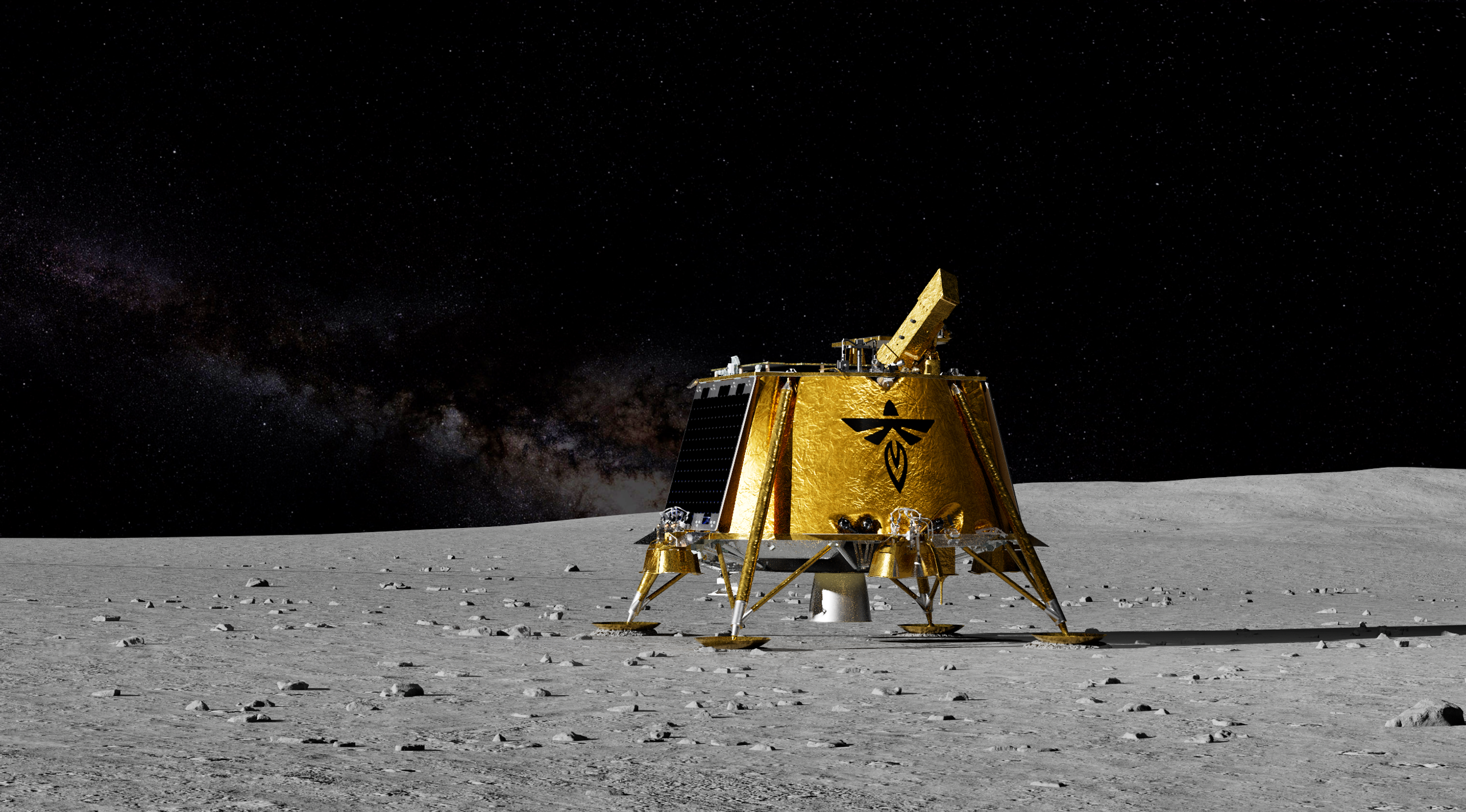- Courses
- GS Full Course 1 Year
- GS Full Course 2 Year
- GS Full Course 3 Year
- GS Full Course Till Selection
- MEP (Mains Enrichment Programme) Data, Facts
- Essay Target – 150+ Marks
- Online Program
- GS Recorded Course
- NCERT- First Ladder
- Polity
- Geography
- Economy
- Ancient, Medieval and Art & Culture AMAC
- Modern India, Post Independence & World History
- Environment
- Governance
- Science & Technology
- International Relations and Internal Security
- Disaster Management
- Ethics
- Current Affairs
- Indian Society and Social Issue
- CSAT
- 5 LAYERED ARJUNA Mentorship
- Public Administration Optional
- ABOUT US
- OUR TOPPERS
- TEST SERIES
- FREE STUDY MATERIAL
- VIDEOS
- CONTACT US
Blue Ghost Mission 1: Future of Private Moon Missions
Blue Ghost Mission 1: Future of Private Moon Missions
23-04-2025

- In March 2025, Firefly Aerospace’s Blue Ghost Mission 1—nicknamed "Ghost Riders in the Sky"—successfully landed on the Moon, marking a milestone in commercial spaceflight.
- Selected under NASA's Commercial Lunar Payload Services (CLPS) initiative, this mission represents a key step in enabling regular, cost-effective lunar access in support of NASA’s Artemis Program.
Background: The CLPS Initiative and Commercial Moon Landings
- NASA’s CLPS program is a strategic partnership with private industry aimed at reducing the cost and increasing the cadence of Moon missions.
- By outsourcing delivery services for scientific and technological payloads, CLPS enables faster deployment of instruments critical to lunar science and future human exploration.
- In February 2024, Intuitive Machines became the first private company to achieve a soft landing on the Moon with its IM-1 mission, the first U.S. lunar landing since Apollo 17 in 1972.
- Firefly Aerospace has now followed suit, achieving the first fully successful commercial Moon landing with an upright lander.
Mission Overview: Blue Ghost Mission 1
- Launched aboard a SpaceX Falcon 9 rocket from Kennedy Space Center on January 15, 2025.
- Blue Ghost Mission 1 carried ten scientific and technology payloads.
- The lander, named Golden, entered lunar orbit on February 13 and touched down on the surface on March 2, near Mons Latreille in Mare Crisium, a basaltic plain on the Moon’s northeastern near side.
- The mission lasted approximately 60 days, including:
- 25 days in Earth orbit
- 4 days in lunar transit
- 16 days in lunar orbit
- 346 hours (over 14 days) of surface operations
- 5 hours into the lunar night after sunset
The landing site in Mare Crisium—once an ancient impact basin filled by volcanic lava 3 billion years ago—offers a unique opportunity to study lunar geology, heat flow, and solar wind interactions.
Scientific Objectives and Payload Highlights
The mission carried ten payloads with objectives that included:
- Measuring heat flow from the lunar interior
- Investigating plume-surface interactions
- Studying crustal electric and magnetic fields
- Capturing X-ray images of Earth’s magnetosphere
Additionally, the mission conducted technology demonstrations, such as:
- Regolith sampling and adherence testing
- Dust mitigation using electrodynamic fields
- Evaluating radiation-tolerant computing
- Testing Global Navigation Satellite System (GNSS) capabilities on the Moon
Strategic Importance and Future Missions
- Blue Ghost’s successful performance strengthens the commercial foundation of NASA’s lunar plans. Its data and technology tests will inform future lander designs and help mitigate lunar surface risks for crewed Artemis missions.
- The CLPS initiative continues with upcoming missions, including:
- IM-2 by Intuitive Machines, featuring the Athena lander.
- Firefly’s contribution showcases the growing capability of U.S. private companies to execute complex lunar missions, opening the door for sustainable lunar exploration.
|
Also Read |
|
| NCERT Books For UPSC | |
| UPSC Monthly Magazine | Best IAS Coaching in Delhi |




